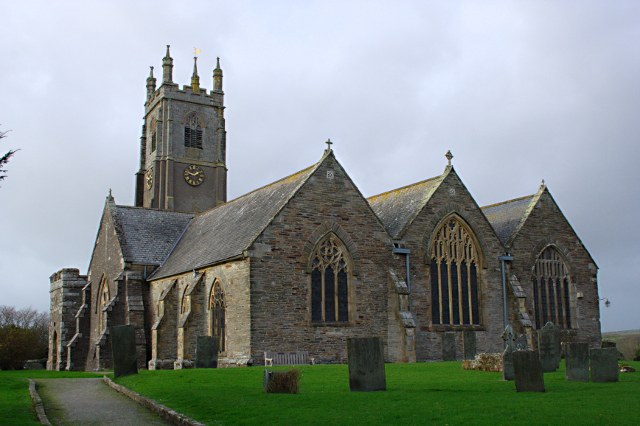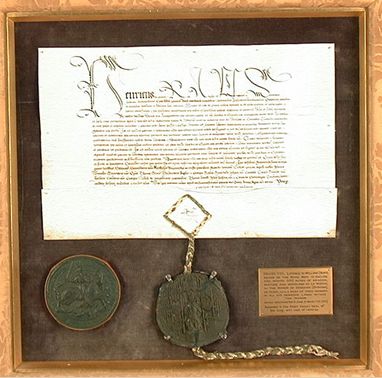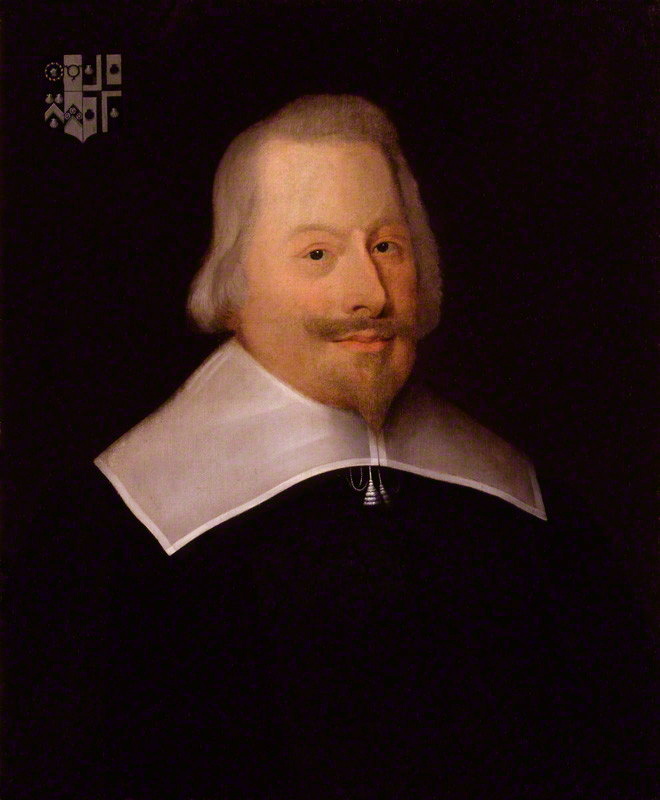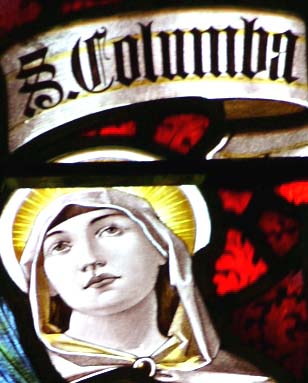|
Trewan Hall
Trewan Hall (pronounced ''Trew-an'') is a historic manor house in the parish of St Columb Major, Cornwall, England, UK. The surviving Jacobean style manor house is located one mile north of the town. It was the ancestral estate of the Vivian family (later Vyvyan, when a Vivian daughter married a distant cousin with varied spelling) for over 300 years, until it was sold in 1920. The house and gardens, which now includes campsite grounds, has been privately owned by its current owners since 1960. Although the manor house is not generally open to the public, it holds annual open days as part of the National Gardens Scheme. The Manor House The existing main house dates from circa 1633, and was built by the Vivian family as a replacement for the former manor house at Trenoweth (now Higher Trenoweth Farm), a short distance from Trewan. The building is a Grade II* Listed structure. Its origins are in the 15th century, but most of the fabric dates from 1635 onwards (a fireplace is i ... [...More Info...] [...Related Items...] OR: [Wikipedia] [Google] [Baidu] |
St Columb Major
St Columb Major is a town and civil parishes in England, civil parish in Cornwall, England, United Kingdom. Often referred to locally as ''St Columb'', it is approximately southwest of Wadebridge and east of Newquay Ordnance Survey: Landranger map sheet 200 ''Newquay & Bodmin'' The designation ''Major'' distinguishes it from the nearby settlement and parish of St Columb Minor on the coast. An electoral ward simply named ''St Columb'' exists with a population at the 2011 census of 5,050. The town is named after the 6th-century AD Saint Columba of Cornwall, also known as Columb. Twice a year the town plays host to "Cornish hurling, hurling", a medieval game once common throughout Cornwall but now only played in St Columb and St Ives, Cornwall, St Ives.It is also played irregularly and less frequently at Bodmin, but nowhere else. It is played on Shrove Tuesday and again on the Saturday eleven days later. The game involves two teams of unlimited numbers (the 'townsmen' and the ... [...More Info...] [...Related Items...] OR: [Wikipedia] [Google] [Baidu] |
Vivian & Sons
Vivian & Sons was a British metallurgical and chemicals business based at Hafod, in the lower Swansea valley in Wales. The firm was founded in 1810, disappearing as a separate entity in 1924. Its chief outputs were ingot and sheet copper, with sulphuric acid and artificial manures as by-products.Thomas (1966) About 1800, the Cornishman John Vivian (1750–1826), the first of the Vivian family to settle in Swansea, became managing partner in the copper works at Penclawdd and Loughor owned by the Cheadle Brasswire Company of Staffordshire. By 1806 his second son, John Henry Vivian, was made manager at Penclawdd. In 1808–1810, land at Hafod was leased from the Duke of Beaufort and the Earl of Jersey, by the new firm of Vivian & Sons. The partners were John Vivian and his two elder sons, John Henry Vivian and Richard Hussey Vivian. Richard was the older but was fully occupied in his military career; it was John Henry who became managing partner.Thomas (1966)Morris (1995) It wa ... [...More Info...] [...Related Items...] OR: [Wikipedia] [Google] [Baidu] |
Efford
Efford (anciently ''Eppeford, Elforde'', etc.) is an historic manor formerly in the parish of Eggbuckland, Devon, England. Today it has been absorbed by the city of Plymouth to become a large, mostly post-World War II, eastern suburb of the city. It stands on high ground approximately 300 feet above the Laira estuary of the River Plym and provides views over long distances: to the north across Dartmoor, to the east and south-east across the South Hams. It consists predominantly of local authority and housing association properties. Before this land was built upon it was known as 'The Wilds of Efford', and was largely unspoilt countryside and marsh land. That a deer park may have been attached to the manor is suggested by the survival of the street name "Deer Park Drive". Etymology The former manor is situated on land sloping down towards the River Plym and it was suggested by the Devon historian Tristram Risdon (d.1640) that its ancient name was ''Ebbing-Ford'' "of a passage ... [...More Info...] [...Related Items...] OR: [Wikipedia] [Google] [Baidu] |
William III Of England
William III (William Henry; ; 4 November 1650 – 8 March 1702), also known as William of Orange, was the sovereign Prince of Orange from birth, Stadtholder of County of Holland, Holland, County of Zeeland, Zeeland, Lordship of Utrecht, Utrecht, Guelders, and Lordship of Overijssel, Overijssel in the Dutch Republic from 1672, and List of English monarchs, King of England, Monarchy of Ireland, Ireland, and List of Scottish monarchs, Scotland from 1689 until his death in 1702. He ruled Great Britain and Ireland with his wife, Queen Mary II, and their joint reign is known as that of William and Mary. William was the only child of William II, Prince of Orange, and Mary, Princess Royal and Princess of Orange, Mary, Princess Royal, the daughter of King Charles I of England, Scotland, and Ireland. His father died a week before his birth, making William III the prince of Orange from birth. In 1677, he Cousin marriage, married his first cousin Mary, the elder daughter of his maternal u ... [...More Info...] [...Related Items...] OR: [Wikipedia] [Google] [Baidu] |
James II Of England
James II and VII (14 October 1633 – 16 September 1701) was King of England and Monarchy of Ireland, Ireland as James II and King of Scotland as James VII from the death of his elder brother, Charles II of England, Charles II, on 6 February 1685, until he was deposed in the 1688 Glorious Revolution. The last Catholic monarch of Kingdom of England, England, Kingdom of Scotland, Scotland, and Kingdom of Ireland, Ireland, his reign is now remembered primarily for conflicts over religion. However, it also involved struggles over the principles of Absolute monarchy, absolutism and divine right of kings, with his deposition ending a century of political and civil strife by confirming the primacy of the English Parliament over the Crown. James was the second surviving son of Charles I of England and Henrietta Maria of France, and was created Duke of York at birth. He succeeded to the throne aged 51 with widespread support. The general public were reluctant to undermine the principle ... [...More Info...] [...Related Items...] OR: [Wikipedia] [Google] [Baidu] |
William Blathwayt
William Blathwayt (or Blathwayte) (1649 – 16 August 1717) was an English diplomat, public official and Whig politician who sat in the English and British House of Commons between 1685 and 1710. He established the War Office as a department of the British Government and played an important part in administering the English (later British) colonies of North America. Early life Blathwayt was born at St Botolph's, Aldersgate and baptized in the parish of St Martin-in-the-Fields in London on 2 March 1649, the only son of William Blathwayt, barrister, of the Middle Temple, and Anne Povey, daughter of Justinian Povey of Hounslow, Middlesex, who was accountant-general to Queen Anne of Denmark. He was born to a well-to-do family of Protestant merchants and lawyers. After his father's death, his mother remarried Thomas Vivian, of the prominent Cornish family. In 1665 he was admitted at Middle Temple. Career Blathwayt joined the diplomatic service in 1668 when his uncle Thomas Po ... [...More Info...] [...Related Items...] OR: [Wikipedia] [Google] [Baidu] |
Dyrham Park
Dyrham Park () is a baroque English country house in an ancient deer park near the village of Dyrham in South Gloucestershire, England. The house, with the attached orangery and stable block, is a Grade I listed building, while the park is Grade II* listed on the National Register of Historic Parks and Gardens. The current house was built for William Blathwayt in stages during the 17th and early 18th centuries on the site of a previous manor house, with the final façade being designed by William Talman. It contains art works and furniture from around the world, particularly Holland, and includes a collection of Dutch Masters. The house is linked to the 13th-century church of St Peter, also Grade I listed, where many of the Blathwayt family are buried. The house is surrounded by of formal gardens, and parkland which supports a herd of fallow deer. The grounds, which were originally laid out by George London and later developed by Charles Harcourt Masters, include water fea ... [...More Info...] [...Related Items...] OR: [Wikipedia] [Google] [Baidu] |
High Sheriff Of Cornwall
Sheriffs and high sheriffs of Cornwall: a chronological list: The right to choose high sheriffs each year is vested in the Duchy of Cornwall. The Privy Council of the United Kingdom, Privy Council, chaired by the sovereign, chooses the sheriffs of all other English counties, other than those in the Duchy of Lancaster. This right came from the Earldom of Cornwall. In the time of earls Richard of Cornwall, Richard and Edmund, 2nd Earl of Cornwall, Edmund, the Steward (office), steward or seneschal of Cornwall was often also the sheriff. Sheriffs before the 14th century 14th-century sheriffs 15th-century sheriffs {{columns-list, colwidth=30em, *1400–1404: Henry V of England, Henry of Monmouth{{sfn, Hughes, 1898, p=21{{sfn, Polsue, 1872, p=122{{sfn, Polwhele, 1816, p=106 **28 October 1400: William Marney, Sir William Marney undersheriff{{sfn, Hughes, 1898, p=21 **Michaelmas 1401: John Trevarthian, Sir John Trevarthian undersheriff{{sfn, Hughes, 1898, p=21 **Easter 1402: Joh ... [...More Info...] [...Related Items...] OR: [Wikipedia] [Google] [Baidu] |
Cornwall (UK Parliament Constituency)
Cornwall is a former county constituency covering the county of Cornwall, in the South West of England. It was a United Kingdom constituencies, constituency of the House of Commons of England then of the House of Commons of Great Britain from 1707 to 1800 and of the House of Commons of the United Kingdom from 1801 to 1832. It was represented by two Knights of the Shire, elected by the Plurality-at-large voting, bloc vote system. Under the Reform Act 1832, it was divided between the constituencies of East Cornwall (UK Parliament constituency), East Cornwall and West Cornwall (UK Parliament constituency), West Cornwall. Boundaries and franchise The constituency consisted of the whole of the historic counties of England, historic county of Cornwall, the most south-westerly county of England, occupying the part of the South West peninsula to the west of the River Tamar which divides the county from Devon. (Although Cornwall contained a number of parliamentary boroughs, each of which ... [...More Info...] [...Related Items...] OR: [Wikipedia] [Google] [Baidu] |
Anthony Nicholl
Anthony Nicholl, 14 November 1611 to 20 February 1658, was an English politician from Cornwall. Prior to the outbreak of the Wars of the Three Kingdoms in 1639, he was closely associated with Parliamentarian leaders John Pym and John Hampden. A political moderate, following victory in the 1642 to 1646 First English Civil War, he was among the Eleven Members accused by senior Army officers in July 1647 of attempting to destabilise the kingdom. Suspended in January 1648, he was restored, then expelled in Pride's Purge of December 1648. He returned to Parliament in 1654, and was appointed High Sheriff of Cornwall in 1656. He died in London on 20 February 1658. Personal details Anthony Nicholl was born in Cornwall on 14 November 1611, one of numerous children of Humphrey Nicholl (1577–1643), a member of the Cornish gentry, and his wife Philippa Rouse (died 1669), half-sister to John Pym. Anthony married Amey Speckett (1609–1685), whose family came from Thornbury, Devon; th ... [...More Info...] [...Related Items...] OR: [Wikipedia] [Google] [Baidu] |
St Columba's Church, St Columb Major
St Columba's Church is a 14th-century, Grade I listed parish church in the Church of England Diocese of Truro in St Columb Major, Cornwall. In 1860 plans were drawn up by William Butterfield, in hope of St Columb church becoming the cathedral of the future diocese of Cornwall, but the cathedral was built at Truro. A second church dedicated to the same saint is known as St Columba's Church, St Columb Minor. History The current church dates from the 13th to 15th centuries. The font is Norman and there are many good examples of woodcarving in the church: these include the bench ends dated 1510, the rood screen, wagon roofs, and a 19th-century carved wooden pulpit. In 1676 three youths set fire to a barrel of gunpowder, killing themselves and causing £350 worth of damage to the church. Through public donations and a small parish rate the church was repaired within nine months. Parish status The church is in the Lann Pydar joint benefice with: * St Ervan Church * St Eval Church ... [...More Info...] [...Related Items...] OR: [Wikipedia] [Google] [Baidu] |








